Half-Forgotten 70s Sci-Fi: "Fantasy Voyages"
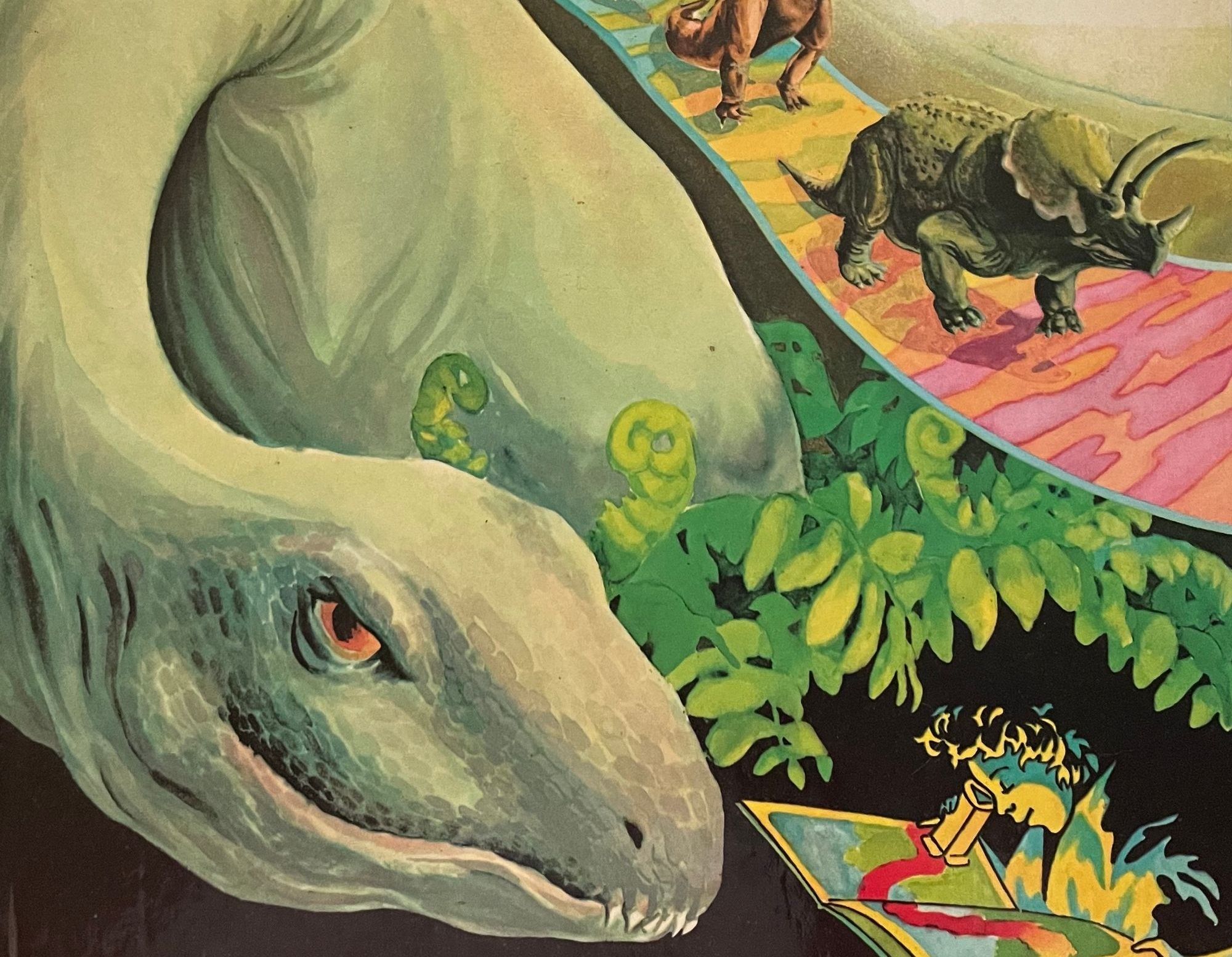
I recently received a tip in my Tumblr messages about an interesting pair of books I hadn't heard about before:
Hi, thanks for everything you post! I have been looking for two books largely missing from the internet: Two large children's Golden books by Linda and John Brewer from 1974 - Fantasy Voyage Through Prehistoric Time and Fantasy Voyage Through Outer Space, both featuring a "FuntasyScope Viewer." Psychedelic art unlike anything anywhere else. Both I've spotted before on eBay but without the key instrument of the Viewer.
Even without the Viewer, I'd love to see scans of these two books.
Interior pages of "Fantasy Voyage Through Outer Space" -- with the shiny-as-a-mirror three interior walls of the viewer, every move along the path creates new kaleidoscope visuals all throughout. Really wish I still had these and intact.
Information about these two books is indeed pretty scarce online, although it's not a complete black hole, as they both have listings on Amazon and other online stores.
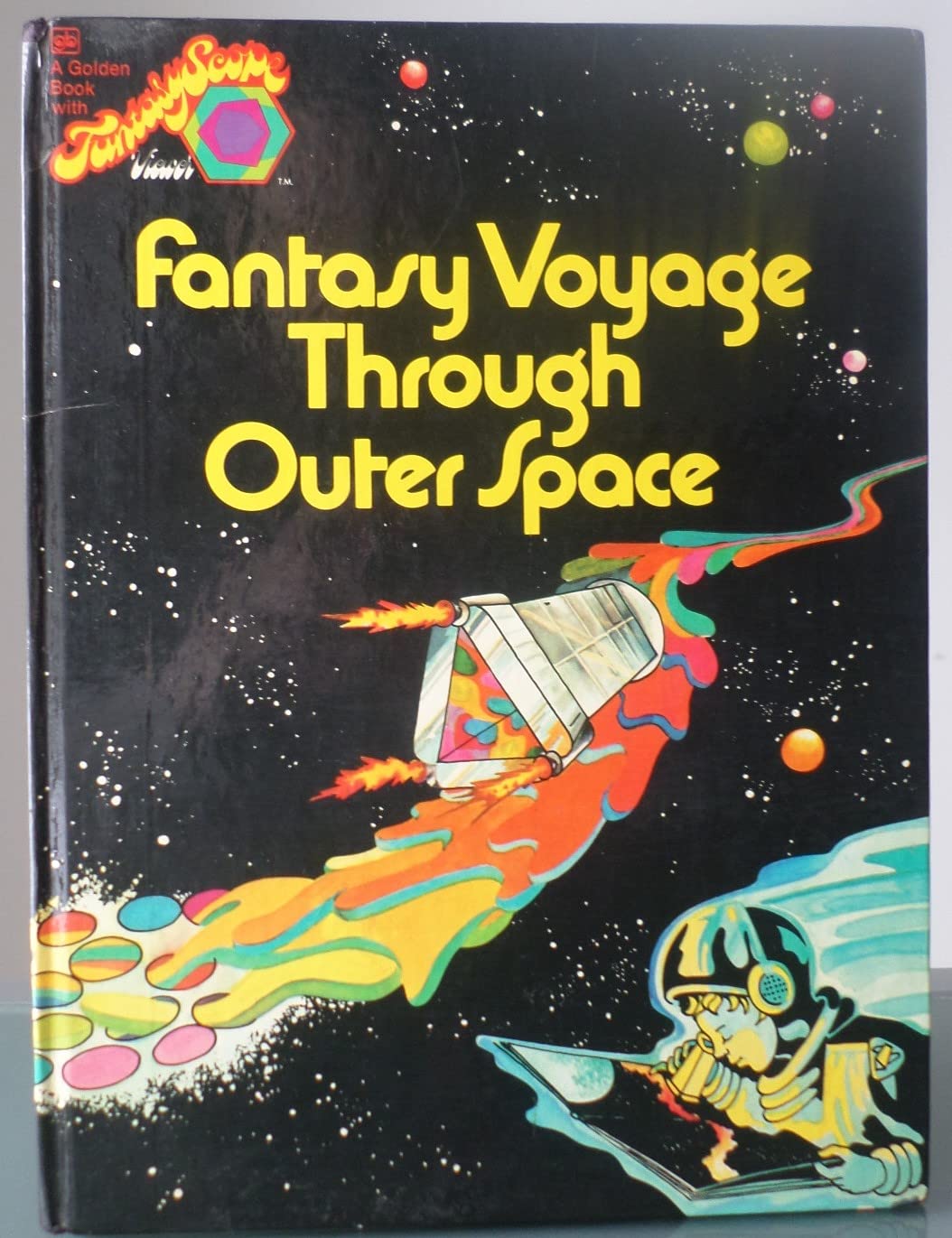
My Tumblr commenter said it was created by Linda and John Brewer – the book cites them as the illustrators and a "Jon Hassell" as the author.
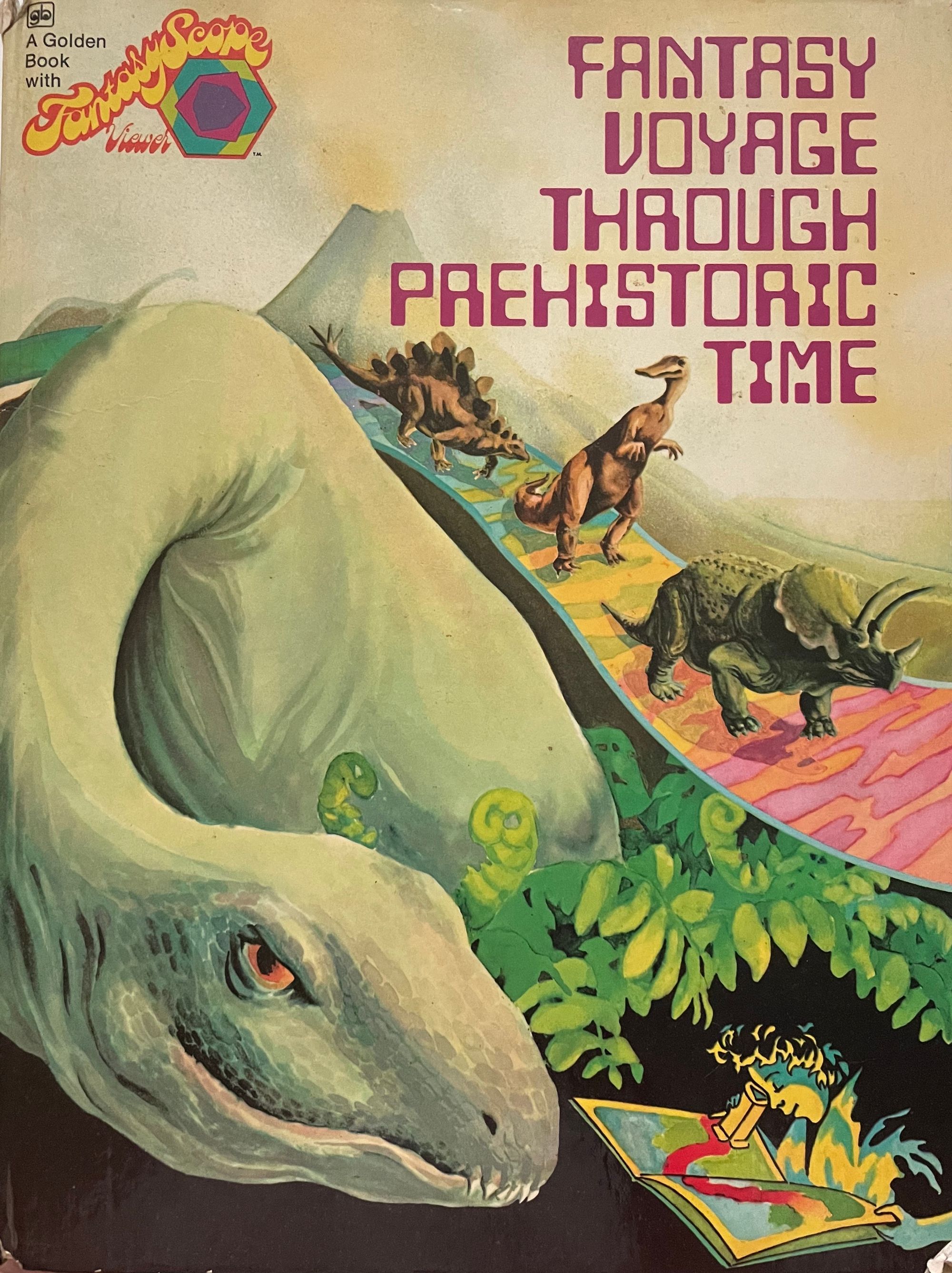
Now, I know what you're thinking: Jon Hassel, the American trumpet player and composer, who is best known for developing the concept of "Fourth World" music, which describes a "unified primitive/futurist sound" combining elements of various world ethnic traditions with modern electronic techniques? Surely not that Jon Hassel?
His extensive Wikipedia page pops right up when you Google the name, but it doesn't say a thing about a mid-70s stint in kid's picture books.
Two people can have the same name, and this wouldn't be the first time a name from retro sci-fi art history has overlapped with another celebrity figure in the music industry, as I am reminded every time I post something by sci-fi illustrator Colin Hay, who is not the Men at Work lead vocalist Colin Hay.
But no. This really is the same Jon Hassel.

You could call this tweet the confirmation, but there's even more evidence in an easily overlooked conversation in the comments under it.
did you know that jon hassell wrote a children's book explaining deep time? pic.twitter.com/JBAfew1FLm
— Visible Cloaks (@visiblecloaks) October 4, 2022
The commenter says "My step-mother-in-law illustrated those books!!" and follows up, presumably talking about Hassel: "She was good buddies with him for years and has lots of funny stories."
Anyway, that's the story. Someone needs to add these titles to Hassel's Wiki page. The books themselves don't stand out as particularly special or interesting to me (apologies to the Brewers!), although they are a great example of the fascinating connection between science fiction and prehistoric art in this era, which I cover in detail in my art book.

***
Two recent retro sci-fi projects
Double feature time!
First, here's a quick article from a guy who decided to clean up the artwork that was used as the endpaper for a ton of books in the Tom Swift Jr. series. It's a classic image from a 1950s kid's book classic franchise – I think I only read one or two Tom Swift titles as a kid myself, but I still have a hazy memory of enjoying this image. Here, see if you recall it:
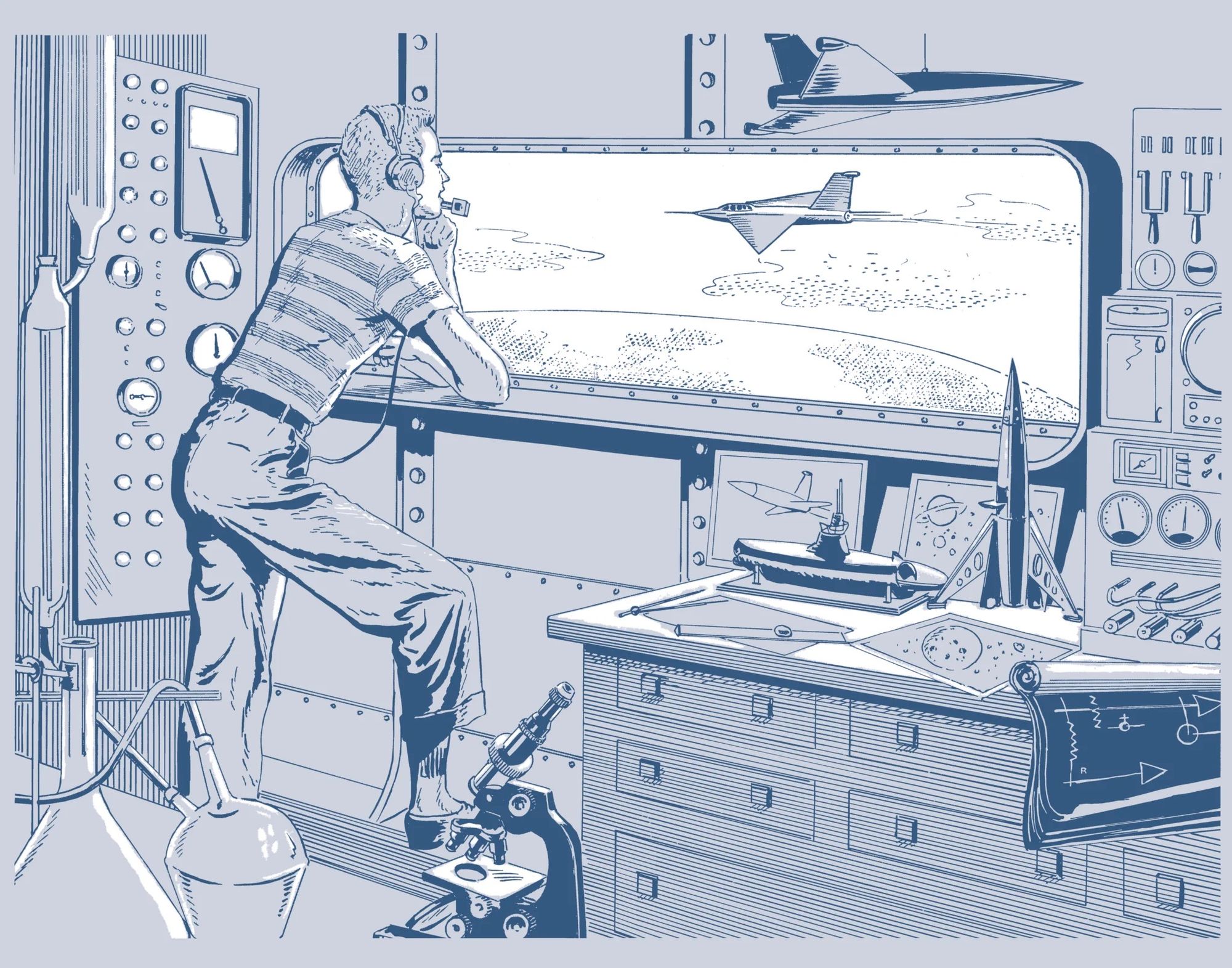
The link has some more nuts and bolts info about this artwork, including a few tweaks that make this image more complete and distinct from its actual in-print appearances:
- The original instrument panel has a line on the panel that mistakenly extends beyond the chemistry glassware.
- Two drawers on the lower right don't have their vertical lines inked.
- The oscillograph shows an impossible horizontal plot.
Here's one of the original book scans, if you – like me – need the extra visual guidance to figure out what the heck an oscillograph is.

I heard about the Tom Swift endpaper project from this PulpCovers tweet, which has a high-res version, for all your desktop wallpaper needs.
The second project? This photoshopped wall of retro sci-fi paperbacks, compiled by author Michael Chabon as "an imaginary reconstruction of the Fantasy & Science Fiction section at Page One Books, Columbia, MD, as aggregated and averaged by memories of regular, intense perusal during the years 1972-1980."
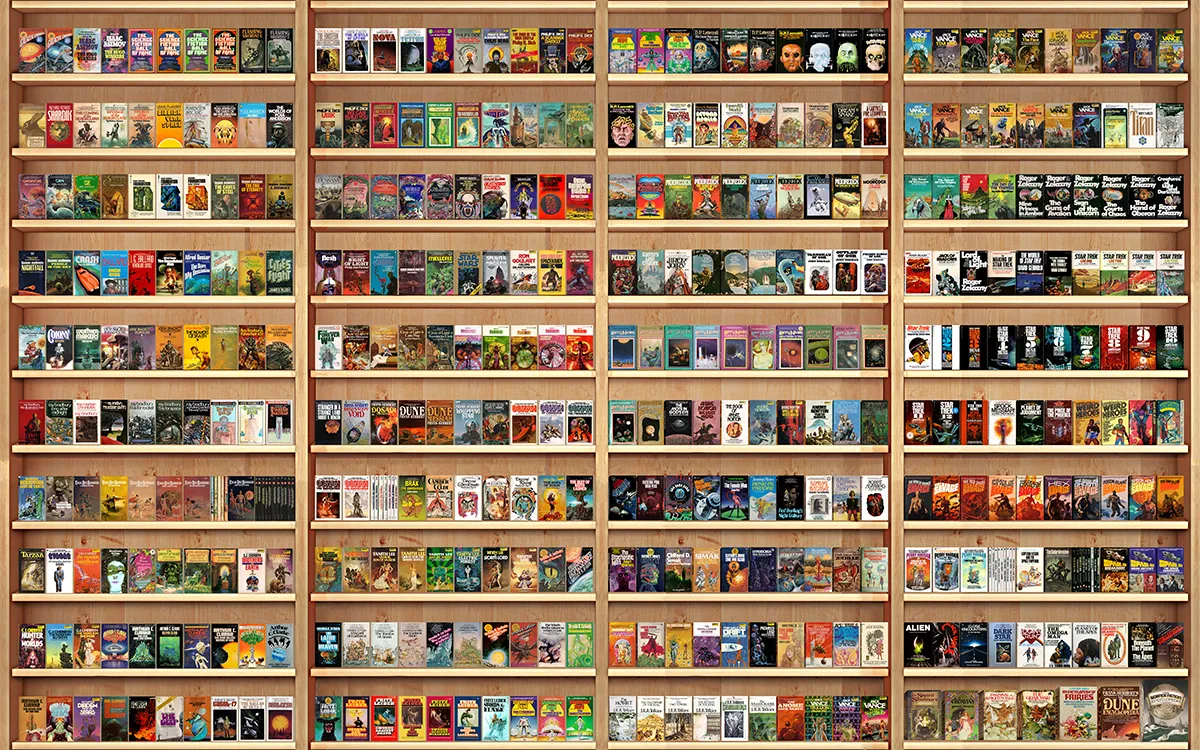
That's just the low-res version: Check out this link to download a few massive versions. Plus, here's the original Threads post and the Boing Boing post that I learned about it from.
Lots of great paperbacks that I recognize on here, including plenty that I featured in my own art book! For instance, there's that Dean Ellis Illustrated Man cover that I was ranting about just a few issues ago. The shelves here serve as a fun grab-bag of deep cuts and well-known classics.
***
I could tell I was going to enjoy this article just from the headline.
Who Cleans The Toilets On The Death Star?
Karlo Yeager Rodriguez, Blood Knife
If military science fiction were to accurately reflect just how much of a soldier’s day is spent, for instance, waxing, stripping, and re-waxing the same stretch of passageway every couple of days, it might better reflect just how boring military service can be. There is the risk, of course, of frustrating readers who have come to expect adventure, epic battles, and straightforward heroism in their military science fiction. But maybe frustrating those readers would be for the best.
***
Sci-Fi Art History Fun Fact
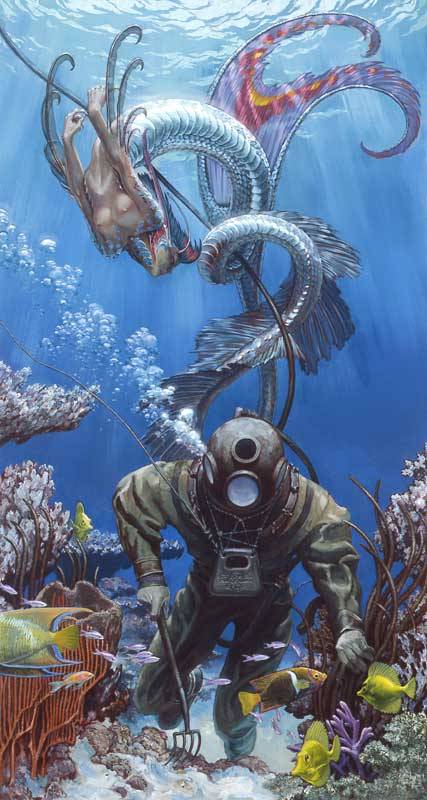
Back in the hazy distant past of 2016, Barnes and Noble operated a pretty good blog about sci-fi and fantasy books that I would freelance for (The blog content is still online, albeit with some weird formatting).
I did a review of The Art of Stephen Hickman, and I thought the backstory behind one image in particular – ‘Diver and Mermaid,’ included here – was really interesting. Here's the bit, from my review.
“Originally a private commission, the painting received a second life when Hickman bought it back and sent it to famed speculative fiction author Harlan Elison, who had called him up to ask for unpublished paintings. Elison wrote an entire short story around the work, Midnight in the Sunken Cathedral, and it appeared in a Dream Corridor anthology with Hickman’s painting on the cover.”
We tend to think about written stories inspiring illustration rather than illustration inspiring stories, but sci-fi and fantasy artists have inspired way more authors just like this over the decades, and I love hearing about these hidden connections.
***
Book Promotion Corner
I did an interview with Joachim Boaz of the book blog SF Ruminations. Some fun behind-the-scenes stuff in this.
It's nice to get a chance to talk about the ins and outs of putting an art book together – if anyone wants to do an interview with me, just reach out! I can offer plenty of artist-approved illustrations to accompany it.
Exploration Log 3: Interview with Adam Rowe, author of Worlds Beyond Time: Sci-Fi Art of the 1970s (2023)
Joachim Boaz, SF Ruminations
Is there a particular cover or artist that got you hooked on science fiction art of the 1970s?
Sort of! I first became interested while I was goofing off online in 2013 while studying for finals in college and found a piece of 1977 art by an unknown artist, featuring a wizard on a giant mushroom. I realized I loved the style and subject matter, and I looked around for a Tumblr that I could follow for more of it. I couldn’t find one, so I started my own, and my first post was that initial piece of art that inspired me. I’m not sure why I called it “napkin art” in that post; it’s pretty clearly a piece of drawing paper.
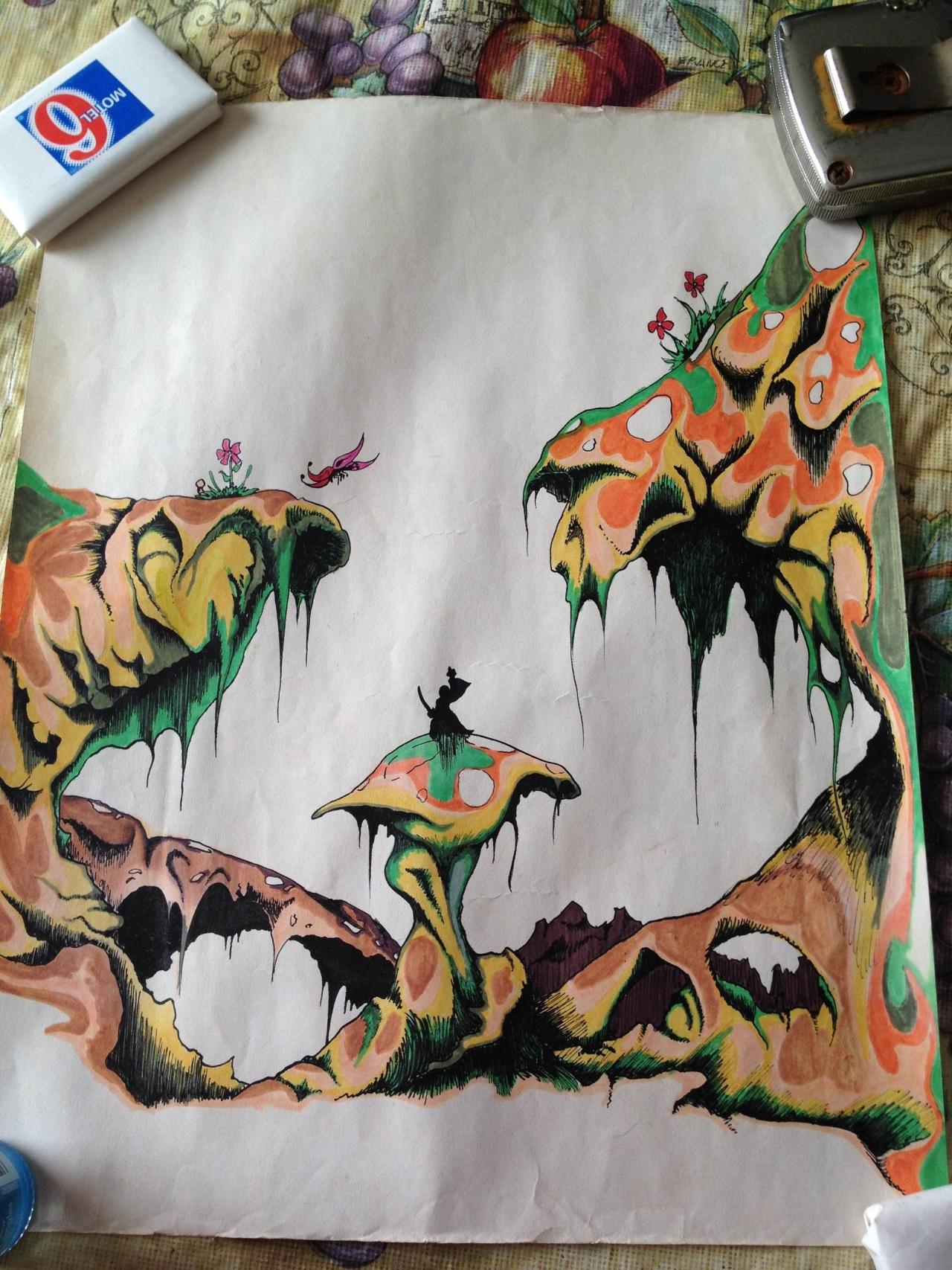
What do you find appealing about 1970s science fiction art in particular?
It’s really hard to pin that down! And it’s only gotten harder over the years, as I gain a deeper appreciation for a wider range of very different styles that were all being used during that decade. There’s no confusing Mike Hinge with John Berkey, for instance. There’s just something about the colors, the details, and the “analog” impression offered by paint or ink as opposed to fully digital art.
The imagination used for the subjects of this type of art often strikes me as bolder and weirder than a lot of science fiction in popular media today, too. There are plenty of equally off-beat artists working today, but not as many make it to book covers.
The book presentation I mentioned last time went really well, and it is now available online, if you missed it and are dying to see an hour-long YouTube video of me shuffling through retro art history at high speed.
***
Next Time: We're talking about Horacio Salinas Blanch, the final artist in my Extended Edition trilogy of great surrealist illustrations from around the globe.